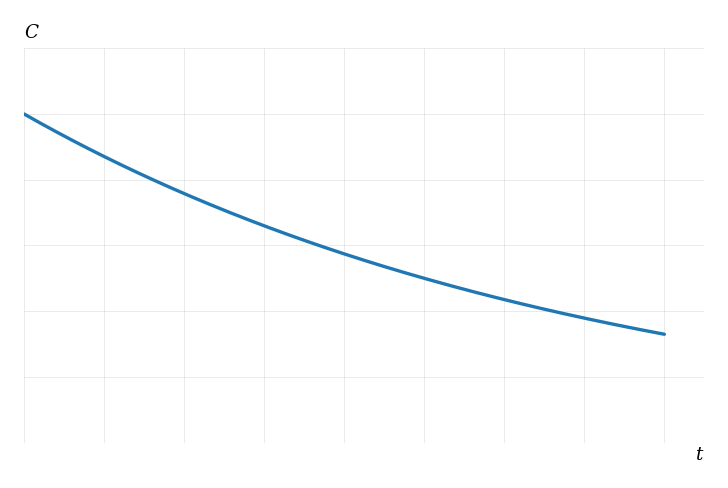- IB
- SL 2.4—Key features of graphs, intersections using technology
Practice SL 2.4—Key features of graphs, intersections using technology with authentic IB Mathematics Analysis and Approaches (AA) exam questions for both SL and HL students. This question bank mirrors Paper 1, 2, 3 structure, covering key topics like functions and equations, calculus, complex numbers, sequences and series, and probability and statistics. Get instant solutions, detailed explanations, and build exam confidence with questions in the style of IB examiners.
The concentration of a chemical in a solution, in milligrams per liter (), is modeled by the function , where is the time in hours after the chemical is added, and are positive constants.
The graph below shows the concentration over the first 8 hours.

The initial concentration is , and after 5 hours, the concentration is . All concentrations are given correct to one decimal place.
Show that .
Find the value of , giving your answer in the form , where is a rational number.
Find the concentration when .
A line through with gradient meets at . The distance .
Show the -coordinates satisfy
State the condition on for two distinct intersections.
Show .
Solve for using .
A quadratic model is fitted to three measured points , , .
Determine (numerically). Give your values correct to 3 significant figures.
Write in vertex form . Hence state the vertex and the range of . Give to 3 d.p.
Let . Solve for to 3 d.p., and justify the number of solutions.
Solve for .
Let It is given that .
Determine correct to 3 significant figures.
Find the composites and and state their maximal domains.
Solve for , giving your answer correct to 3 decimal places, and justify the uniqueness of the solution.
Find and state its domain and range.
Consider the functions and .
Graph the function for .
Graph the function on the same set of axes.
Find the intersection points of and .
A rational function has vertical asymptote and horizontal asymptote . It passes through the points and .
Show that the function can be written in the form for some constant , and determine . Hence write explicitly as with integer coefficients.
Determine all key features of : domain, range, intercepts, asymptotes, and the sign of on and .
Let (domain ).
Solve to three decimal places and justify exactly one solution in each of and .
Describe transformations mapping to .
A quadratic model is fitted to three measured points , , .
Determine (numerically). Give your values correct to 3 significant figures.
Write in vertex form . Hence state the vertex and the range of . Give to 3 decimal places.
Let . Solve for to 3 decimal places, and justify the number of solutions.
Solve for .
Let It is given that .
Determine correct to 3 significant figures.
Find the composites and state maximal domains.
Solve for (3 d.p.) and justify uniqueness.
Find and its domain/range.
The basic function is for . Define the transformed function
Describe, step by step, the transformations that map to .
State the domain and range of .
Solve for , giving your answers correct to 3 d.p.
Define . Using technology, solve for . Give all solutions correct to 3 d.p.
The function will be explored for the following questions.
Express in terms of sine and cosine.
Explain why using the unit circle.
Validate this identity for .
Sketch the graphs of and on the same axes to illustrate this property.